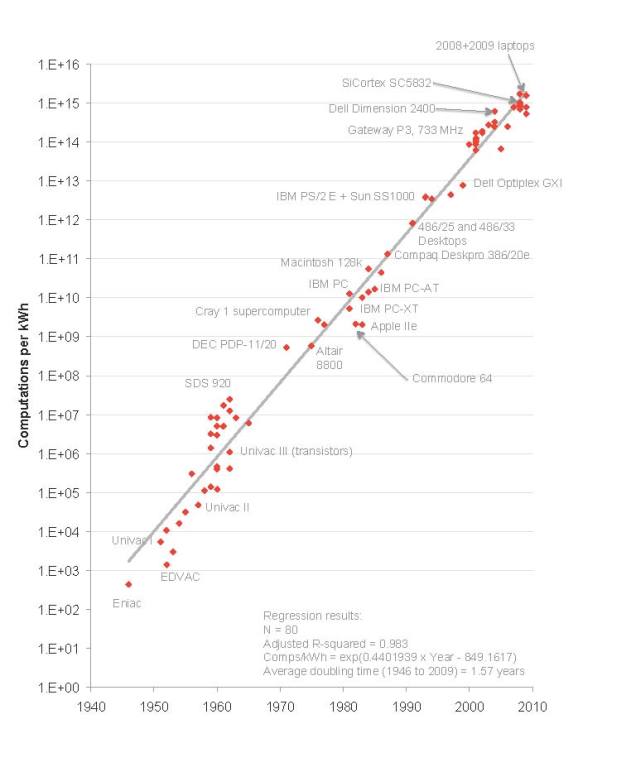Electrical efficiency of computing
Published 18 February, 2018
Computer performance per watt has probably doubled every 1.5 years between 1945 and 2000. Since then the trend slowed. By 2015, performance per watt appeared to be doubling every 2.5 years.
Details
In 2011 Jon Koomey reported that computation per kWh had doubled every roughly 1.5 years since around 1950, as shown in figure 1 (taken from him).1 Wikipedia calls this trend ‘Koomey’s Law‘. In 2015 Koomey and Naffziger reported in IEEE Spectrum that Koomey’s law began to slow down in around 2000 and by 2015, electrical efficiency was taking 2.5 years to double.2
We have not investigated beyond this, except to note that there is not obvious controversy on the topic. We do not know the details of the methods involved in this research, for instance how ‘computations’ are measured.

- “What most folks don’t know, however, is that the electrical efficiencyof computing (the number of computations that can be completed per kilowatt-hour of electricity) has doubled about every one and a half years since the dawn of the computer age ” – Jon Koomey, 19 Dec 2011, http://www.koomey.com/post/14466436072
- “This trend started well before the first microprocessor, way back in the mid-1940s. But it began to come to an end around 2000. Growth in both peak-output efficiency and performance started to slow, weighed down by the physical limitations of shrinking transistors. ” – Koomey and Naffziger, 31 March 2015, https://spectrum.ieee.org/computing/hardware/moores-law-might-be-slowing-down-but-not-energy-efficiency

